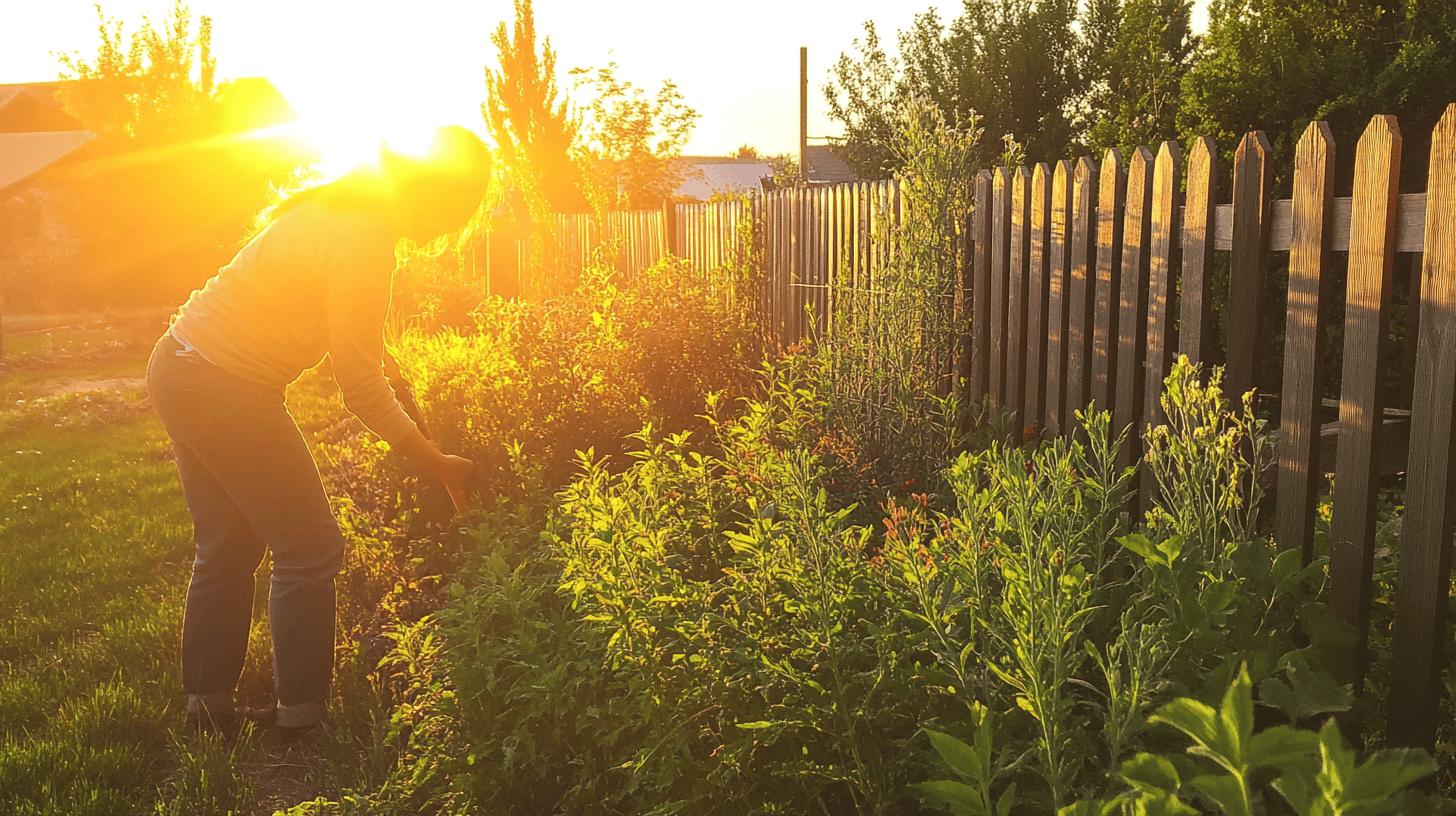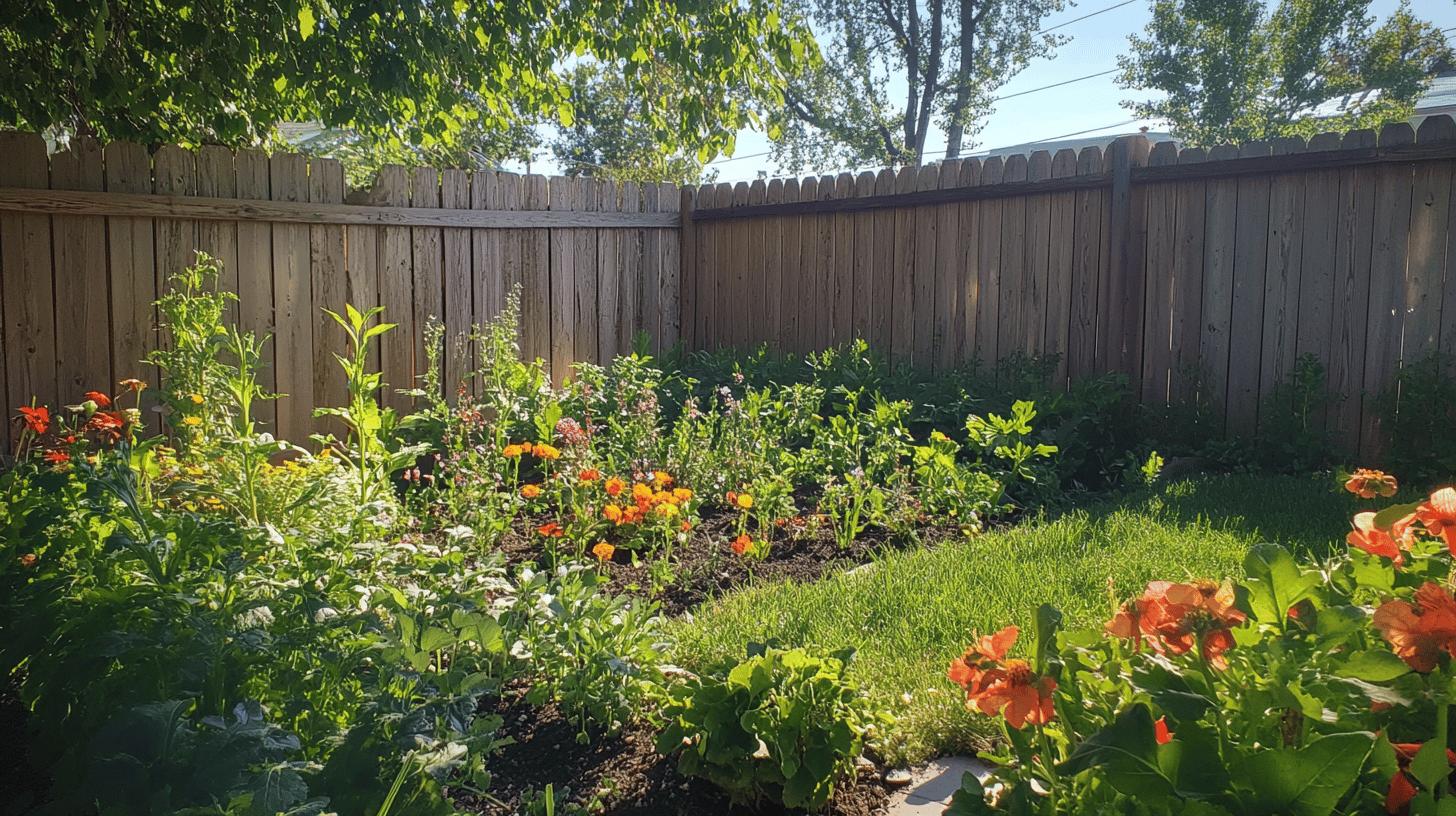How to Transform Your Fence Line: A Guide to Creating a Living Paradise
Listen, we’ve all been there – staring at that plain fence line and thinking, “There has to be something more interesting I can do with this space!” Well, I’ve got some exciting news for you: that humble fence line could become the most stunning feature of your entire backyard. I’ve spent years experimenting with different plants and designs along my own fence line, and I’m thrilled to share everything I’ve learned with you.
Why Your Fence Line Deserves Some Love

Think about it – your fence line is probably one of the largest continuous spaces in your garden, yet it’s often relegated to being just a boundary marker. But imagine transforming it into a living tapestry of colors, textures, and sweet fragrances! Whether you’re dreaming of a privacy screen of fragrant Viburnum or a sophisticated border of evergreen Buxus, I’m here to help you make it happen.
Using Undulating Lines for Depth
Incorporating undulating lines in your garden layout can add an illusion of movement and depth, making the space feel more expansive. By avoiding straight lines and instead opting for curves, you create natural flow and interest. This approach allows for varied planting depths, enabling you to include larger trees and shrubs without them overwhelming the space. A border that varies between 6 to 15 feet in depth is ideal, as it contributes to a park-like appearance that feels both inviting and spacious.
Designing Your Dream Fence Line Garden
Let me tell you something exciting – designing a fence line garden is like painting on a canvas, except this masterpiece grows and changes with the seasons! Here’s how to create something truly special:
The Magic of Curves and Movement
You know how a winding path always feels more inviting than a straight one? The same principle applies to your garden beds! Instead of sticking to straight lines (yawn!), try creating gentle curves in your border. I learned this trick from a landscape architect friend, and it’s been a game-changer. Here’s why it works:
- Curves naturally draw your eye through the space
- They create perfect pocket areas for feature plants
- You can vary the depth from 6 to 15 feet (trust me, this range is perfect)
- It makes your yard feel like a high-end botanical garden!
Playing with Heights (It’s Easier Than You Think!)
Here’s a pro tip I wish someone had told me years ago: think of your fence line plants like a choir – you need sopranos, altos, and bass voices to create harmony! In garden terms, this means:
Back Row (Your Tall Players)
- Perfect spot for those gorgeous Sweet Viburnums
- Ideal for privacy-creating evergreens
- Aim for plants that reach 6-8 feet tall
Middle Row (The Medium Heights)
- This is where you can have fun with flowering shrubs
- Try mixing textures and leaf shapes
- Plants around 3-4 feet tall work beautifully here
Front Row (The Ground Level Stars)
- Ground covers that spread naturally
- Low-growing perennials
- Plants under 2 feet tall that won’t block the view of your other selections
Maintenance Made Easy (Yes, Really!)

Now, I know what you’re thinking – “This sounds gorgeous, but how much work is it?” Well, I’ve got good news! With the right approach, maintaining your fence line garden can be surprisingly manageable. For those just starting out, a beginner’s guide to garden maintenance can be invaluable. It offers foundational tips and insights that can make the process less daunting and more enjoyable. By understanding the basics, you can ensure that your garden not only survives but thrives, turning your fence line into a lush, vibrant paradise with minimal effort. Let me share my favorite low-effort, high-impact maintenance strategies:
The Five Essential Tasks That Make All the Difference
- Strategic Pruning: Don’t worry, you won’t need to be out there every weekend! Most plants need a good trim just 2-3 times per year. I like to make it a seasonal ritual – maybe with a cup of coffee and my favorite gardening podcast.
- Smart Pest Management: Here’s a secret – if you plant native species and encourage beneficial insects, nature does most of the pest control for you! I haven’t used chemical pesticides in years, and my garden is thriving.
- Mulching Magic: This is your best friend for low-maintenance gardening. A good 3-inch layer of mulch in spring will:
- Keep weeds at bay
- Hold moisture in the soil
- Regulate soil temperature
- Break down slowly to feed your plants
- Soil Love: Think of soil preparation like making a good foundation for a house. Take time to get it right at the start, and you’ll save countless hours later. I add compost to my fence line beds every spring, and my plants reward me with spectacular growth.
- Watering Wisdom: Install a simple drip irrigation system along your fence line (it’s easier than you think!), and you’ll cut your watering time down to… well, zero! I set mine on a timer and forget about it.
Eco-Friendly Gardening Tips That Actually Work
Incorporating eco-friendly practices into your garden maintenance routine can significantly enhance the sustainability of your outdoor space. Opt for natural pest control methods, such as introducing beneficial insects or using organic repellents, to minimize chemical use. Mulching with organic materials like wood chips or straw not only supports soil health but also reduces waste. These environmentally conscious choices contribute to a healthier garden ecosystem, fostering a sustainable space that thrives in harmony with nature. Let me share some tried-and-true eco-friendly practices that have transformed my garden:
- Companion planting to naturally deter pests
- Using coffee grounds as a natural fertilizer (your plants will love it!)
- Creating habitat spaces for beneficial insects
- Collecting rainwater for irrigation
- Using fallen leaves as free mulch
Final Thoughts
Remember, creating your perfect fence line garden is a journey, not a race. Start with a small section if you’re feeling overwhelmed, and expand as your confidence grows. I’d love to hear about your fence line garden plans – drop a comment below and let’s chat about your vision!
Happy gardening!
Your questions Answered
What are some low-maintenance plants for a fence line?
Low-maintenance plants like Clusia, Boxwood, Sweet Viburnum, and Podocarpus are great for a fence line. They offer aesthetic appeal, dense foliage for privacy, and require minimal care throughout the year.
How can I create a low-maintenance design for my backyard fence line?
A low-maintenance backyard fence line design incorporates hardy plants like Sweet Viburnum and Clusia, using varied plant heights and limited color palettes for easy upkeep and visual interest.
What is an effective plant for privacy along a fence line?
Sweet Viburnum is excellent for privacy as it provides dense foliage and fragrant blooms. For year-round privacy, consider evergreen shrubs like Juniperus ‘Blue Star’ or Buxus ‘Wintergreen’.
What can I place under a fence line to enhance the garden?
Placing decorative mulch or stones under a fence line keeps the area tidy, prevents weed growth, and improves overall garden aesthetics, adding a finished look to the fence line.
How can I soften the look of a fence line?
To soften a fence line, use climbing plants like clematis or honeysuckle. They add vertical interest and lush growth, creating a natural, gentle transition from the garden to the fence.
What are some tips for designing a fence line garden layout?
Incorporate undulating lines and varied plant heights to create depth and movement. A concise color palette with textured plants enhances visual appeal and creates a cohesive garden design.
How can seasonal and climate considerations impact fence line gardening?
Selecting evergreen and weather-resistant plants ensures year-round appeal and reduces maintenance. Adding seasonal flowers introduces color variation, enhancing the garden’s look throughout different times of the year.
What are practical tips for maintaining a fence line garden?
Regular pruning, adopting eco-friendly pest control, mulching, and seasonal soil preparation are key. These tasks promote plant health and sustainability in your fence line garden.
Which climbing plants are suitable for enhancing a fence line?
Clematis, honeysuckle, climbing roses, and jasmine are fantastic climbing plants. They provide vertical interest, flourish along fences, and complement the garden without causing structural damage.






